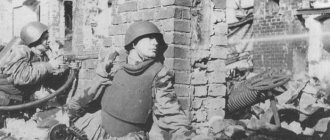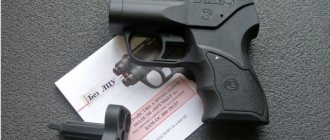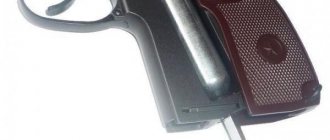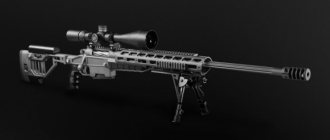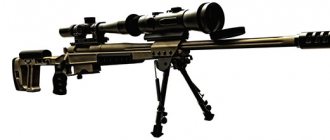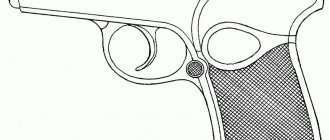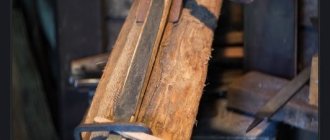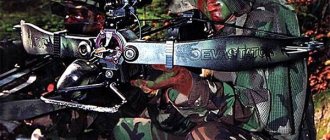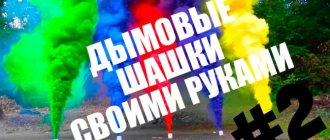Skeet shooting is part of the Olympic Games program and is one of the oldest disciplines. The first award was won at the second Olympics and since then shooting has been included in the program of every games. The competition takes place outdoors; shooters use smooth-bore weapons and shotgun cartridges to hit skeet targets.
Foam rubber case for shotgun MTs-21-12 (disassembled) HS-VHF-15 Helios 2,470 for 1 pc. Case for a gun with two interchangeable barrels, case HSN 7 975 for 1 pc. Case for weapons without optics, semi-rigid plastic 125 cm Cho-32 AQUATIC 2,408 for 1 pc. Case for shotgun IZH-27 foam rubber HS-CHRP-14 Helios 2 325 for 1 pc. Case 120 without optics King of the forest (leather) natural sheet (8789003180) Holster 4,957 for 1 piece. Case for weapons without optics, semi-rigid plastic 135 cm Cho-32 AQUATIC 2,408 for 1 pc. Case No. 21 Semin 4,545 for 1 piece.
-50%
Rifle case Shaman case, 130 cm KhSN 4,521 2,260.50 for 1 pc. Case for weapons with optics semi-plastic, 127x27 cm Cho-33 AQUATIC 3 140 for 1 pc.
Choose a quality case or case for your gun
The origins of this go back to the competitions of hunters who, in order to determine the most accurate, shot at birds. Even in the very first Olympic Games, pigeons were used as targets. And only later the pigeons were replaced with plates. Skeet shooting is a complex and serious sport that requires long and thorough preparation.
To learn how to shoot well from a clay pigeon, it is important not just to joyfully shoot towards the targets and admire yourself if you suddenly hit. It is important to structure your training correctly, and yes, you can’t do it without a coach, at least at first. Then you yourself will understand that a mentor is necessary at any stage of training and for any athlete.
Bandolier No. 50 Semin 2,285 for 1 piece. Bandolier K-12 24 cartridges. Luxury closed (231) HSN 3,009 per 1 piece. Section K-16/12, 2 for 12 rounds (IV) (228-4) HSN 3,681 per 1 piece. Bandolier K-12 24 cartridges. Luxury open (232) CHN 2,316 per 1 piece. Bandolier K-16 24 cartridges. open (217) CHN 2,153 per 1 piece. Bandolier K-12 24 cartridges. Luxury closed (I) (231-1) CHN 3,455 per 1 piece.
-25%
Double-row bandolier for 24 cartridges (12-16 cal.) with a common valve 53337000 2,750 2,062.50 for 1 piece.
Buy a convenient bandolier
The result shown by a shooter at competitions naturally reflects the effectiveness of his training process. However, many evaluate the effectiveness of training either in the number of shots fired or in the targets hit. You often hear statements like this:
- I had a good workout and shot through a box of cartridges!
Of course, shooting is also necessary and the importance of this aspect is difficult to dispute. But what about the goals of such training? Mindless shooting for the sake of shooting? This can only develop one skill – the shooter’s readiness to recoil. Each practice, each shot and target hit should be meaningful and gradually make your shooting more effective.
Jagdtash (806-2) CHSN for 1 piece. Hunter's game bag (28x34x10cm) SO-29 AQUATIC 2,791 for 1 piece. Textile bag (HS-YAG-2) Helios Helios 1,750 per 1 piece. Tactical bag No. 1 (9751) KhSN 2,998 for 1 piece. Hunter's bag (38*26*28cm) CO-13 AQUATIC 2,966 for 1 piece. Jagdtash No. 2 5,250 for 1 piece. Jagdtash No. 10 3,800 for 1 piece. Jagdtash No. 11 4,580 for 1 piece.
Choose a hunting bag or game bag
A beginner needs to shoot a reasonable amount under the guidance of a trainer in order to develop the necessary skill in handling weapons and bring it to automaticity. The time it takes for everyone is different - there is no average value.
For training to bring results, it is important to follow the trainer’s instructions and, importantly, keep a training diary. By analyzing the recordings, you will be able to assess your growth as a shooter, avoid common mistakes, pay attention to those elements that are not working out and adequately assess your level of training.
Journaling is also important for the following:
Planning the training process.
- Creation and formation of personal terminology that will be convenient for you to use.
- Systematization of acquired knowledge and its sources.
- Planning competitive tactics.
- Analysis of competition results - analysis of errors, statistics.
- Qualitative analysis of training – analysis of the training process, adjustments if required.
- Analysis of fitness peaks throughout the year.
- Analysis of preparation for competitions, etc.
- Lifehack - record your workout on a voice recorder; it will help you analyze the workout in your diary in more detail.
UNIBOS Federation
Ten best American fightersstory
If you want to master shooting using modern firing tactics, then you definitely need to visit the UNIBOS Federation shooting range. The shooting club is a community of people who share a passion for developing applied shooting techniques from rifled and smooth-bore weapons.
The main pride of the “Universal Combat System” club is its instructors (although the technical equipment here is also okay). Experienced instructors will teach sports and combat shooting from a rifled carbine, large-caliber pistol and sniper rifle.
Address: Moscow, Varshavskoe highway no. 14, building 11/31 on Yeiskaya street.
Metro: st. "Tula"
Website: https://www.unibos.ru
Phone: +7 (495) 988–28-83.
Approximate prices: 4000 rubles for 4 lessons.
Opening hours: daily, from 9:00 to 22:00.
UNIBOS will tune your personal weapon and help you zero it (don’t forget to take permission to own and carry it). The club is also focused on teaching hand-to-hand and knife fighting, applied self-defense and self-defense using improvised objects.
Thus, shooting ranges in Moscow are a place where you can shoot small arms, practice attentiveness, accuracy, concentration and reaction. This list of shooting clubs in Moscow was compiled by me based on reviews from friends and acquaintances. I hope this information helps you too.
Weapon Sense
When practicing skeet shooting, or in any other discipline, it is important to feel your weapon. To do this, you can train not only at the stand, but also at home:
- Stand-up-tab in front of the mirror. Control the angle of the gun in relation to the body, the position of the chin, head, eyes - the gaze should be straight, not sullen.
- Jump up to different points in the room, randomly.
- Jump into the trajectory - the ends of the barrels are motionless, the right hand works (for right-handed people).
- Train leashes at at least three speeds – slow, medium, fast.
- Body work - drawing the interior with a gun attached.
- Training at home with weapons is a creative process, so you can improvise and combine exercises yourself.
PRACTICAL SHOOTING: secrets of mastery (Part I)
When constructing exercises, targets are located at different distances, and the target environment changes from competition to competition so that athletes do not get used to the same shooting conditions. All this makes practical shooting one of the most exciting types of shooting sports, competitions in which are exceptionally entertaining and dynamic and always take place in the atmosphere of a real holiday.
At PS competitions, people shoot from pistols and revolvers, smooth-bore shotguns and rifled carbines. The technique of shooting a pistol is the most complex and interesting.
It is probably very difficult to find a sport that would require such tension of nerves, concentration of the intellect and physical strength of the athlete. During the exercise, you need to process every shot and score points. You need to move quickly, controlling the position of the weapon - you will be disqualified for dangerous movement with a pistol - and the competition is over. You can't miss - these are big penalty points. You cannot shoot at penalty targets; hitting them will also result in punishment. At the same time, time is pressing on you: faster, faster... During this race, you need to keep the entire game plan in your head: in what order to shoot, how to move, where to change the magazine, etc. This creative process captures the shooter, preventing him from feeling tired or boredom.
Practical shooting classes are an exciting pastime in the fresh air, improving your shooting skills, strengthening your health, strengthening your character and achieving more and more new sports results. You can practice practical shooting at any age. Employees of security companies and law enforcement officers have already appreciated practical shooting and accepted this sport as an applied one - to improve the fire training of personnel. Many citizens who took part in the exercises at least once became ardent fans of practical shooting and acquired an interesting and healthy hobby.
ABOUT THE AUTHOR
Vitaly Kryuchin is the Chairman of the Central Council of the Russian Practical Shooting Federation LLC. Multiple winner of Russian championships in practical shooting with a pistol, shotgun and carbine. European champion in practical shotgun shooting. Two-time European champion in dueling shotgun shooting. Bronze medalist of the European Championship in practical pistol shooting. Two-time winner of the Nordic Practical Pistol Shooting Championship.
This is how he himself talks about his hobby: “I have been involved in shooting sports all my life - since the age of seven. First there was a scarecrow, then homemade “arson” and “kurkach” pistols. A little later there was a homemade bow, then a small-caliber rifle and a Margolin pistol. In 1999, I was introduced to practical shooting, which changed my whole life.”
Determining your dominant eye
Before you begin, you need to determine which eye is your dominant eye. To do this, you need to connect the index fingers and thumbs of both hands into a ring with a diameter of about 5 cm. Stretch your arms in front of you and look through this ring with both eyes at some distant object. Then, without taking your eyes off this object, bring your hands closer to your face.
The eye that has a ring of fingers will be dominant - strong, and the other - weak.
Aiming with both eyes
You should always aim with both eyes. Scientists have found that if you squint one eye, the visual acuity of the other eye automatically drops by 15-20%. The eyes work in pairs. A closed eye creates unnecessary tension in an open one. This happens because the brain, compensating for the darkening in the closed eye, unnecessarily dilates the pupils in both eyes. When shooting at speed, aiming with one eye is especially harmful. In this state, the field of view is reduced by half, the time it takes to transfer the weapon from target to target increases, and the reaction to changes in the target environment worsens.
To prevent your weak eye from interfering at first, you need to stick a piece of translucent tape on the lens of your glasses in front of the pupil of your weak eye. This will make it possible to aim without squinting.
After some time, you will develop the necessary skill, and the tape can be peeled off. You will aim with both eyes open, and it will happen naturally, without tension.
Rack
A large number of errors when shooting arise from incorrect holding of the pistol, hand position and incorrect stance. Over the past ten years, practical shooting has developed the most convenient and “fast” front stance with a double grip, which allows you to make accurate aimed shots in a static position and at the same time easily hit targets in motion.
Before we begin to study holding a pistol, let’s agree that the right hand of a “right-handed” shooter will be called strong, and the left hand weak. For a left-handed shooter it’s the opposite.
The stance in practical shooting is free, frontal. The head is held straight, feet shoulder-width apart. Sometimes the pushing leg is slightly forward. The back is straight, the shoulders are perpendicular to the line of fire. Some shooters move their heads forward a little.
You need to bend slightly at the waist and lean your body slightly forward to make your stance more aggressive. When shooting at speed, it is more convenient to control the pistol. If you stand completely straight, your body will lean back after each shot. To fire another shot, you will need to return to the starting position. At the same time, you should not lean forward too much, this will constrain the shooter and increase the time it takes to transfer the weapon from one target to another.
Pay attention to the sensations in your feet. The center of gravity of the body should be shifted closer to the toes of the feet. Many shooters squat a little, bending their knees slightly, which makes the stance more stable.
In high-speed shooting with wide carries, a low stance is preferable.
The thumb of the strong hand is parallel to the bolt of the pistol. You need to make sure that there is no gap between the base of the thumb of the strong hand and the hand of the weak hand.
This stand is also called Isosceles, which means “triangle” in English. When viewed from above, the body and hands with a pistol resemble a triangle.
Some shooters with smaller hands hold the pistol by placing the index finger of their weaker hand on the front of the brace. This grip is not suitable for everyone. Shooters with large hands may grip the bolt carrier with the heel of their weak hand's thumb, causing delays during shooting. Therefore, you need to experiment yourself and consult with an instructor or an experienced shooter.
We look at holding a pistol in such detail because it is the foundation of marksmanship training. An incorrect grip will be a source of shooting errors in the future. This will be especially acute in difficult shooting positions and when shooting on the move.
So, the palms tightly clasp the pistol, the shoulders do not rise, the arms are slightly bent at the elbows and spread apart, and the strong arm is bent a little more than the weak one. This will be observed if the stance is correct and the shoulders are perpendicular to the line of fire. The hands do not squeeze, attract or push away the gun, that is, they do not oppose each other in any way. The hands simply hold the gun. Imagine how you would hold an ax in front of you, intending to cut a log.
At the moment of firing, under the influence of recoil, the arms themselves bend at the elbows and wrists, working as shock absorbers, and automatically return the pistol to its original state without changing the position of the body. This allows you to quickly fire a second shot. At first, this position will seem uncomfortable, but after several weeks of training you will feel comfortable and confident.
| 1 - Start of the exercise. Pistol at chest level; 2 - Pistol on target. The shooter imitates a shot; 3 - The shooter takes half a step to the right, pulls the pistol to his chest and removes his finger from the trigger; 4 - Taking a stance, the shooter points the pistol at the target and simulates a shot; 5 - Without stopping, the shooter takes half a step to the left. At the same time he pulls the gun to his chest. |
We will not consider the widespread Weaver stance, when the strong hand with the pistol is straightened at the elbow and tense, playing the role of a butt, and the weak one is bent at the elbow and pulls the pistol towards itself. This stand is outdated. It is no longer used in practical shooting. Compared to others, it is more constrained and slow and is not suitable for shooting on the move.
Stance and grip training technique
Stance and grip are the foundation of practical shooting.
While performing the exercise, keep your eyes on the target at all times. Only the hands and the gun should move, the rest of the body is motionless. Movements should be smooth and measured. Repeat this exercise until your arm muscles get tired, but at least 10 times. If you feel tired, place the gun in the holster and give your hands a rest.
Remember! When moving and moving, unless you are hitting targets, your finger should always be outside the trigger guard. Do the exercise until your arm muscles get tired. If you feel tired, place the pistol in the holster and give your muscles a rest.
At a shooting range or shooting range, the exercise is performed facing the targets. Indoors - facing a bulletproof wall. At home, you can cut out a smaller model of a cardboard target from paper and attach it to the wall. Similarly, you can use a piece of colored tape or a fragment of a pattern on the wallpaper.
| 1 - With a double grip of the pistol, a strong hand tightly holds the handle, the index finger touches the trigger with the last phalanx; 2 - The hand of the weak hand bends down at an angle of 45° to the forearm and clasps the hand of the strong hand; 3 - When forming a grip, the third phalanx of the index finger of the weak hand should rest tightly against the lower part of the trigger guard; 4 - The fingers of the weak hand should firmly hold the handle and secure the grip of the strong hand. |
Exercise 1
Aiming a weapon at a target
The training is in vain. No timer. The exercise is designed to train the ability to quickly point a pistol at a target, as well as to practice the skill of removing a finger from the trigger when the shooter removes the weapon from the target.
STARTING POSITION. The shooter holds the unloaded pistol with a double grip, with the barrel pointed towards the targets, as described above. Check the position of your legs. It is necessary to bend slightly forward at the waist so that the shock from the recoil of the shot does not tilt the body back (when shooting with cartridges). Aim the weapon at the target. Check the position of the brushes. Check to see if your shoulders are raised. Elbows should be bent and directed in different directions. The head is straight or slightly pushed forward. Both eyes are open. If the second eye interferes, then you need to stick a piece of translucent tape on the lens of the glasses in front of the weak eye.
EXECUTION PROCEDURE. After making sure that your grip and stance are correct, place your finger on the trigger and align the sights with the center of the target. Then, with the last phalanx of your index finger, lightly press the trigger, simulating a shot. There is no need to press hard with your finger; it is enough to make an effort that would be enough to pull the trigger if the gun were loaded. Then, without lowering your elbows, pull the weapon to your chest about 20 cm, while simultaneously removing your finger from the trigger. After a short pause, bring the pistol to the eye-target line and pull the trigger. Next, pull the gun to your chest and remove your finger from the trigger. So you continue to make “shots”, pointing the pistol at the target and pulling it towards your chest.
While performing the exercise, keep your eyes on the target at all times. Only the hands and the gun should move, the rest of the body is motionless. Movements should be smooth and measured. Repeat this exercise until your arm muscles get tired, but at least 10 times. When you feel tired, place the gun in the holster and give your hands a rest.
Exercise 2
Step - shot
The training is in vain. No timer. This exercise gives you the ability to control the stance and grip of the pistol when moving, and trains the ability to quickly point the pistol when a target appears. It also reinforces the skill of removing your finger from the trigger when the shooter is not aiming.
STARTING POSITION. The shooter holds the unloaded pistol with a double grip at the level of the solar plexus. The barrel of the gun is parallel to the surface of the earth. The index finger of the strong hand is straightened (outside the trigger guard). Legs are slightly bent at the knees to lower the center of gravity.
EXECUTION PROCEDURE. Point the pistol at the target and simulate a shot, as in exercise 1a. Then take half a step to the side with your right foot, at the same time pull the weapon to your chest about twenty centimeters and remove your finger from the trigger. After completing the step, point the gun at the target, place your finger on the trigger, and simulate a shot. Then, without pausing, take half a step to the left, at the same time pulling the weapon to your chest, removing your finger from the trigger. When completing the step, point the gun at the target and simulate a shot. Without stopping, take another half step to the right, while simultaneously pulling the pistol towards your chest, etc. Repeat the entire cycle several times. Half a step - to the left with an imitation of a shot, half a step - to the right with an imitation of a shot. Try to keep the center of gravity of the body in a horizontal plane at the same level. Make sure that the barrel of the pistol is always pointed at the target and does not rise up while pulling to the chest and moving. Movements should be uniform, without jerking. Control the index finger of your strong hand.
Typical errors and methods for eliminating them
Error 1. The shooter tenses and raises his shoulders. Elevated shoulders constrain and quickly tire the shooter. It is necessary to constantly monitor the position of your shoulders and keep them down.
Error 2. The shooter lowers his elbows while pointing the pistol at the target. With lowered elbows, the pistol will “lift up” more from the recoil of the shot, thereby requiring more time to fire a second shot. To avoid dropping your elbows while shooting, turn your elbows out to the sides and imagine that you have a large bag of cotton candy between your hands. You have to shoot and hold the package. It is not possible to lower or bring your elbows together - the package does not allow it.
Error 3. The shooter tilts his head to the right towards his strong hand (as when shooting from a gun). A tilted head shifts your field of vision and causes unnecessary tension in the neck muscles. To avoid perpetuating these mistakes, you need to practice empty in front of the mirror from time to time. In the mirror you can easily see all your mistakes and correct them immediately. You need to remember the feeling of the correct stance and try when shooting, remembering this feeling, to maintain the correct position.
Mistake 4. Moving your head while aiming. Sometimes novice shooters, when pointing a pistol at a target, begin to move their heads in search of the front sight. Under no circumstances should this be done. The head and torso should be motionless at this moment (if this is shooting in a static position). Only the hands work. The weapon is brought to the eye-target line. Any head movement increases the aiming time.
Error 5. Raising the barrel when aiming the pistol at the target. Some novice shooters, having watched enough militants, begin to lift the barrel of the pistol while aiming. It’s as if they make a “bump” on the trajectory of the pistol and bring the sighting devices to the target from above. This movement is reminiscent of casting a fishing rod. They say that this is how V.I. Chapaev aimed his Mauser in the film of the same name when he fired at the White Guards. At the same time, Vasily Ivanovich also narrowed his eyes. With such a trajectory of movement, the pistol covers the target for some time. This increases the overall aiming time. It is necessary to get rid of this habit by constantly monitoring the movement of the gun. When aiming a pistol, the barrel must be parallel to the surface of the earth and aimed at the target at any point in the trajectory.
Error 6. Lowering the barrel of the pistol when aiming the pistol at the target. When aiming a weapon, some shooters first lower the pistol, straightening their arms at the elbows, and then bring it from below to the target. The gun makes a long journey from the beginning to the end point. This movement is more reminiscent of digging with a shovel than aiming a weapon at a target. When approaching from below, the pistol suddenly appears in the line of fire. Therefore, additional time is required to align the sights.
More often than not, this mistake is made by shooters who have previously completed Olympic shooting disciplines. As you know, the shortest distance between two points in three-dimensional space is a straight line. Therefore, it is necessary to ensure that the movement of the pistol is closer to a straight trajectory. And the barrel should always be pointed towards the targets. This also applies to this case, when you point the pistol at the target from the chest.
Try to avoid unnecessary movements and unnecessary tension when pointing and aiming your weapon. All the errors described above increase the time and worsen the quality of shooting.
(Beginning. Continuation and Ending in the articles “PRACTICAL SHOOTING (
Part II), (
Part III
), (
Part IV), (Part V
), (
Part VI
), (
Part VII
), (
Part VIII
), (
Part IX
)
, (
Part X
), (
Part XI
)")
Vitaly Kryuchin Photo from the author’s archive Bratishka 03-2008
Stand/Upstand/Inlay/Body
Rack
- Feet at an angle of 45°
- The toe of the left foot is directed towards the intended hit of the target (for right-handed people. For left-handed people it’s the other way around)
- It is allowed to stand both on straight legs and on spring-loaded, slightly bent legs.
- The position of the left hand on the fore-end, in which part of it, depends on the individual characteristics of the shooter, but usually, if a fast lead or a quick shot is expected, as on stolen or semi-hijacked targets, then the hand on the fore-end is closer to the block, but if the lead is needed slow and careful control of the trajectory is required, as, for example, when hitting distant targets, the hand on the fore-end is located further from the block.
Required accessories
Before you start learning to shoot with a sniper rifle, you need to decide on the place where you will practice. If you have a firearm, shooting is permitted only in designated areas. See photo.
Sniper rifle shooting area
If you have an air rifle, then it will be enough to go to some deserted area, for example, a forest. The main thing you should have with you is, of course, a weapon, ammunition for it and several targets.
Sniper shooting involves the use of an optical sight, which must be equipped with a weapon. Therefore, this is another device that you cannot do without when learning. The weapon can also be equipped with a bipod at your request, which is intended to increase the stability of the weapon and minimize vibrations.
This video will tell you the basics of shooting with an SVD rifle.
https://youtube.com/watch?v=N7jY_CDR-UA
For convenience, it won’t hurt to take a camping mat, since the main position when shooting will be a prone position. When using a combat rifle, it is worth having special ear protection - headphones. Devices for cleaning/lubricating weapons after shooting are not superfluous. For shooting, you can choose Gamo products; see prices for Gamo rifles here. In addition, popular models are the Ataman 6.35 air rifle, the Barrett m82 rifle, the PCP MP 553k rifle, the SVD 4.5 mm air rifle and the Bur sniper rifle.
Vskidka
- The position of the trunks in relation to the trajectory:
- The barrels point into the trajectory area, the throw should consist only of raising the butt to the cheek, the right hand works.
- The barrels are visually lowered below the trajectory; the throw consists not only of raising the butt, but also of simultaneously raising the barrels into the area of the target's flight path; in this option, the left hand on the fore-end dominates.
General provisions
122. To successfully complete tasks in combat, a sniper must: – continuously, patiently and persistently observe the battlefield and, using subtle signs, look for targets without revealing himself;
– choose a target to hit in a timely and correct manner;
– quickly and accurately prepare data for shooting and, choosing a convenient moment, hit the target in the shortest possible time, if possible with the first shot;
– skillfully fire at all kinds of targets in various combat conditions, both day and night;
– observe the results of your fire and skillfully adjust it;
– monitor the consumption of ammunition in battle and take measures to replenish them in a timely manner.
Key elements of the “preparatory period” training system:
- working at home with weapons;
- eye training;
- theoretical studies;
- shooting of classical disciplines: skeet*, trap**, double-trap*** (~ 20% of the training process);
- shooting with different sporting techniques (~ 10% of the training process);
- control shooting (for results) (~ 20% of the training process);
- shooting: at different distances, with one cartridge, false cartridges, from the hip, to miss, for repeatability, doublets, hunting (~ 10% of the training process);
- shooting at different target trajectories - the emphasis is on the most complex, problematic ones (~ 40% of the training process).
*Skeet (round stand) is an exercise performed on a round stand with eight shooting stations, where seven places are located in a semicircle, and the eighth is in the center of a conventional straight line connecting the first and seventh places. Targets are launched singly and in doublets, the launchers are located below and on an elevated platform - upper and lower. The flight path is from left to right and vice versa, shooting is carried out offhand, until the targets fly out, the shooter holds the weapon at waist level.
**Trench (trench stand) – shooting numbers are located on the same line, targets fly out of a hidden trench located in front of the shooting line, in different directions away from the shooter.
***Double trap – shooting at pairs of targets simultaneously. The plates fly out of the trench along hijacking trajectories, almost parallel to each other.
TIR Sporting
Indoor heated shooting range with shooting distances of 10, 25, 35, 50 and 100 meters.
Large selection of weapons: pistols and revolvers (sports, service, combat), smoothbore shotguns and carbines, with mounted sights. You can shoot flying saucers with guns in the open air at the Moscow Sporting Club, which includes a shooting range. Address: Moscow region, Odintsovo district, 31 km of Minskoe highway Phone: +7(495)598-8286 Opening hours: Sun-Thu - 10:00-22:30, Fri-Sat - 10:00-00:00 Prices: entrance (entry) to the territory of “Sporting Club Moscow” 300 rubles per person, shooting from 30 rubles per shot
Key elements of the “pre-competition period” training system:
- shooting of classical disciplines: skeet, trap, double-trap (~ 5% of the training process - actually 1 training, discipline of choice);
- control shooting (for results) (~ 25% of the training process);
- shooting at doubles (~ 70% of the training process).
Where in Moscow to ride a tank
"Extreme Moscow"
The company offers several entertainment programs. Each includes a ride in a Soviet tracked infantry fighting vehicle called the BMP-1, as well as photography in military uniform with a weapon. You will also be allowed to fire 10 blank shots from a ’74 Kalashnikov assault rifle and will be offered to try a real front-line lunch of buckwheat, pickles, bread and tea.
And for the bravest ones, “Extreme Moscow” has prepared the “Independent Control of BMP-1” program. It’s not cheap, but the experience is worth it: when else will you be able to ride a tank alone in Moscow and visit the museum of military and rescue equipment?
Address: m. Rimskaya, st. Sergius of Radonezh, 11
Cost: from 5,850 rub.
"Russian Safari"
And here you can ride the legendary T-34 tank and the T-55 medium tank of the Soviet period. The event will last three hours: during this time you will also have time to visit the tank museum, receive memorable souvenirs and take part in a photo shoot with combat vehicles.
With the “Russian Safari” you will find a truly extreme ride on tanks: the track of the training ground is equipped with sections for high-speed traffic, hills and difficult places. You will be able to feel all the power and maneuverability of military vehicles!
Address: metro station Belorusskaya, Skakovaya street, 17с1, office 1416
Contacts: +7 (495) 220-5-110
Cost: from 16,600 rub.
"City Voyage"
The company organizes rides on the legendary T-34 tank both as part of a group and individually. The route passes through rough terrain, concrete platforms and forest. Participants are also given a tour of the military base and workshops, shown an exhibition of military equipment and told about the technical structure of combat vehicles.
It’s great that skating is not limited in time - so as long as you have the strength and desire, the tank is at your disposal! After this, you will visit the shooting range and shoot with blank cartridges from real weapons from the Great Patriotic War period, and at the end of the event - lunch in the field kitchen and the presentation of certificates.
Address: metro station Teatralnaya, st. Bolshaya Dmitrovka, house 5/6, building 1
Contacts: +7 (499) 39-810-29,+73
Cost: from 19,180 rub.
"Travel Store"
The tour starts from a tank training ground. You will be introduced to combat vehicles and allowed to ride both inside the BMP-1 tank and outside - on the armor. However, you will have to prepare for shaking - the car will pass through a forest, swamp and off-road. Don't forget to bring extra clothes and shoes!
Address: m. Kuznetsky Most, st. Kuznetsky Most, 21/5, entrance 1
Contacts,+7
Cost: from 2,500 rub.
Tank Museum "Kubinka"
The Kubinka Tank Museum conducts military-themed entertainment programs for children and adults. You can ride a tank either independently at a separate rate or in an organized manner with a group. You will be taught how to operate a combat vehicle, shown how to shoot a Kalashnikov assault rifle, and given a tour of the military-technical museum, as well as fed lunch from the field kitchen.
Address: m. Voikovskaya, st. Z. and A. Kosmodemyanskikh, 34/3
Contacts:
Cost: from 6,900 rub.
"Happiness Store"
invites you to go through a military-style adventure and ride real military equipment. The events are held in a “quest” format - you are immersed in the atmosphere of a military training ground, go through an obstacle course, shoot from machine guns and complete combat missions! You also participate in tank competitions and destroy enemy targets using a dummy grenade - what’s not an interactive “war game”?
Address: m. Avtozavodskaya, st. Leninskaya Sloboda, 19, Omega Plaza
Contacts:
Cost: from 9,000 rub.
How to train for a competition
- Pay special attention to the goal of the current competition - what is important is the result or it is important to work on concentration, technical or psychological aspects.
- Make a detailed training plan for the month preceding the month of the competition (you and your coach will determine what will be more effective for you - more rest or peak load).
- Also draw up a detailed training plan for the two-week period before the competition (the type of fitness the shooter is in plays a role here)
- It is important to adjust to the background so that the eyes adapt.
- And the classics - good sleep, proper nutrition, avoidance of alcohol and excessive consumption of energy drinks, coffee also applies here.
Tracking – Tracking a target
So we got to Trekking
, the last chapter of this video, but the last one is not least. Tracking is tracking a target. That is, if this bot goes to the right or left, I will need to keep my sights on it. This is tracking.
If flicking is needed to quickly cover long distances from the sight, then tracking is for short distances. To practice tracking, you need to turn on first speed and random movements. Then choose some random bot and try to keep your sights on it. Let me tell you right away that this is a very strenuous exercise, especially for players with low sense. If possible, try to perform it as gently as possible, otherwise your hand will hurt very quickly. This is not a shooting technique, but a tool, using which you will greatly improve your shooting by taping, bursting and spraying. The most obvious example is pistol rounds, where opponents strafe very quickly from side to side over short distances. This is where players who are good at tracking earn an advantage.
There is another good option. If the enemy moved in the first exercise, then we will move in this one. The principle is the same. We try to keep the sight on the target, but while moving.
How a shooter's eyes should work
Vision is one of the main elements in shooting, the main goal is focusing on the leading edge of the target relative to its flight path.
- Peripheral or peripheral vision is aimed at perceiving the direction, speed and distance of the target. This is the main type of work of the shooter's eye, accounting for 90% of the total volume. The focusing function is not available for this type of vision.
- Portrait or focus. The goal is to keep your gaze in line with the target. Makes up only 10% of the main volume of work. Cannot perform the function of localizing the direction, speed and distance to the target.
The visual process always begins with the peripheral type, after which the focusing phase begins. Accurate focus or aiming at the kill zone of any target is the logical conclusion of the process. But at the same time, we must strive not to lose sight of the entire field of vision, including both the background and the moving target.
Sports shooting range Skif
Shooting galleries from 20 to 50 meters. "Skif" offers archery, crossbow shooting, knife throwing, a pneumatic shooting range, an airsoft shooting range and classes with a trainer.
Address: 1st kilometer of Kaluga highway, Mamyri village, 8a Telephone: +7(495)532-40-22, Working hours: Mon-Fri - 11.00-23.00, Sat-Sun - 10.00-23.00 + night shift Prices: rifle shooting (instruction, club gun rental, shooting lane, targets, demonstration of the correct stance and correct grip) 60 minutes 150 shots - 600 rubles, pistol shooting (instruction, club gun rental, shooting lane, targets, correct stance demonstration and correct grip) 60 minutes 100 shots - 500 rubles
Theoretical stage
The programs used to obtain a firearms license are approved by the Ministry of Education, so they cannot be fundamentally different from each other. In any center, courses consist of theoretical and practical parts.
The theoretical part examines three main issues.
- The first of them is devoted to the legal framework. The Federal Law “On Weapons” is studied in detail and the basic rules for the purchase, storage and use of weapons are identified.
- The second question reflects the rights and responsibilities of an armed citizen. Despite the fact that permission has been obtained, weapons can only be used in exceptional cases.
- Finally, the third question reflects the specifics of storing, carrying and using smooth-bore long-barreled, short-barreled weapons, as well as OOOP.
Theoretical foundations are taught in equipped classrooms with visual materials. Each student should gain knowledge in the field of technical specifications. They go through concepts such as caliber, destructive force, shot energy, and also master the technique of loading and unloading a weapon and, finally, firing a shot.
Not least important is the issue of one’s own safety. The listener must understand that he is putting himself at risk when shooting and must therefore properly protect himself from light and sound effects. Issues of legal actions in case of loss or theft of weapons are also considered.
Persons intending to renew a license are required to appear at the center to take an examination to renew a license that was previously issued for a weapon. The exam questions for beginners and advanced users are the same. They contain material on safety, technical parameters, as well as the regulatory framework.
Conducting fire, monitoring its results and adjusting
135. When firing, the sniper must carefully observe the results of his fire and adjust it, making necessary changes in the settings of the sight and side wheel or in the position of the aiming point.
The results of your fire are monitored by ricochets, bullet paths and the enemy’s behavior. To adjust the fire along the routes, it is necessary that the shooting be carried out with cartridges with ordinary and tracer bullets in the ratio: one cartridge with a tracer bullet and one cartridge with an ordinary bullet.
Signs indicating the reality of one's fire can be: enemy losses, transition from dashing to crawling, weakening or cessation of fire, retreat of the enemy or retreating to cover.
136. If a fire mission is performed by a pair of snipers, then the sniper-observer must report on the results of observing ricochets or routes:
– when hitting the target – “Target”
– in case of underflight (overflight) – “Underflight (overflight)” or “Underflight (overflight) by so many (meters)”
– for lateral deflections of bullets – “Right (left)” or “Right (left) so many (thousandths or figures)”
137. Adjustment of fire in combat is carried out, as a rule, by changing the position of the aiming point in height and lateral direction. In this case, the aiming point is set to the amount of deviation of the ricochets or tracks in the direction opposite to their deviation from the target (Fig. 70).
Rice. 70. Correction of fire with determination and taking into account deviations on the sight reticle scale
If the deviation of bullets from the target is relatively large and the situation allows you to change the installation of the sight and the side handwheel, then the fire is adjusted by introducing amendments to the sight and the side handwheel.
The sight increases (decreases) by the amount of undershoot (overshoot), measured in meters or thousandths. To measure the height deviation of bullets in thousandths, you should use the height of the square (the large stroke of the lateral correction scale) of the sight reticle, which is equal to 2 thousandths. When you receive a deviation in height of bullets of one thousandth at firing ranges up to 600 m and two thousandths at long ranges, change the sight setting by one division.
An adjustment to the installation of the side handwheel is made by the amount of deflection of the bullets in the lateral direction in thousandths, measured using the lateral correction scale of the sight reticle.
Interesting films for special training
- Seminar “Vitebsk” *File 1 (avi 680 mb) *File 2 (avi 140 mb)
- Video - “Seminar of Special Forces Veterans” File 1 (avi 289 mb) File 2 (avi 76 mb)
- *NEW! DOWNLOAD FOR FREE “Combat Sambo through the eyes of American martial arts lovers”
- REN-TV “REFLECTION”
“Instructors from the ZASCHITA Security Club conducted a number of practical seminars with employees of special forces units of the Republic of Serbia.
- Movie
